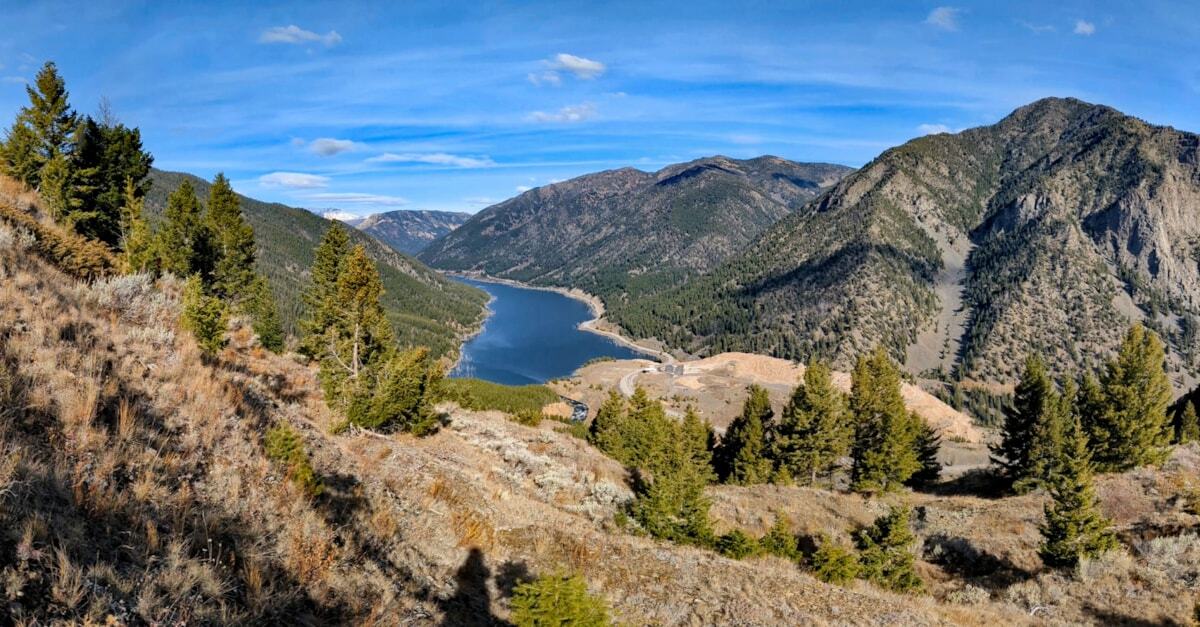Echoing Earthquake Lakes Of Yellowstone’s Wilderness

Have you ever wondered how earthquake lakes form? Yellowstone National Park, known for its geysers and hot springs, also hides these natural wonders. When a powerful earthquake shakes the ground, landslides can block rivers, creating new lakes. These lakes, often surrounded by rugged terrain, offer unique landscapes and habitats. Visiting Yellowstone's earthquake lakes provides a glimpse into the park's dynamic geology. Imagine standing by a serene lake, knowing it was born from the earth's raw power. Whether you're a geology enthusiast or just love nature, these lakes are a must-see. Ready to learn more about these hidden gems? Let's dive in!
Echoing Earthquake Lakes of Yellowstone's Wilderness
Yellowstone National Park, known for its geysers and hot springs, also hides a series of fascinating earthquake lakes. These lakes, formed by seismic activity, offer a unique glimpse into the park's dynamic geological history. Let's explore some of these captivating bodies of water.
Quake Lake: A Testament to Nature's Power
Quake Lake, also known as Earthquake Lake, formed in 1959 after a massive earthquake caused a landslide that blocked the Madison River. This lake stands as a reminder of nature's raw power.
- Quake Lake: Created by a 7.5 magnitude earthquake, this lake is surrounded by eerie, submerged trees. The visitor center nearby provides detailed information about the event and its aftermath.
Hebgen Lake: A Serene Beauty with a Turbulent Past
Hebgen Lake, located just upstream from Quake Lake, was heavily impacted by the same earthquake. Despite its turbulent past, it remains a serene and picturesque spot.
- Hebgen Lake: Known for excellent fishing and boating, this lake's calm waters contrast with its dramatic history. The earthquake caused significant changes to the lake's shoreline, which can still be observed today.
Yellowstone Lake: The Largest High-Altitude Lake in North America
Yellowstone Lake, while not formed by an earthquake, is influenced by the park's geothermal activity. Its vast expanse and unique features make it a must-visit.
- Yellowstone Lake: Covering 136 square miles, this lake sits atop a caldera, with geothermal vents creating hot spots in the water. It's a popular destination for kayaking and wildlife viewing.
Heart Lake: A Hidden Gem with a Volcanic Heart
Heart Lake, located in the southern part of the park, offers a more secluded experience. Its volcanic origins add to its mystique.
- Heart Lake: Accessible via a challenging hike, this lake rewards visitors with stunning views and the chance to soak in nearby hot springs. The surrounding area is rich in wildlife, including grizzly bears and elk.
Shoshone Lake: A Wilderness Adventure
Shoshone Lake, the park's second-largest lake, remains largely undeveloped, providing a true wilderness experience.
- Shoshone Lake: Only accessible by foot or boat, this lake is perfect for those seeking solitude. Its pristine waters and surrounding forests offer excellent opportunities for camping and fishing.
Lewis Lake: A Gateway to Adventure
Lewis Lake, located near the park's southern entrance, serves as a gateway to the backcountry.
- Lewis Lake: Popular for canoeing and kayaking, this lake also provides access to the Shoshone Geyser Basin. The area is less crowded, making it ideal for a peaceful retreat.
Conclusion
Yellowstone's earthquake lakes offer a unique blend of natural beauty and geological intrigue. Each lake tells a story of the park's dynamic history, inviting visitors to explore and appreciate the power of nature.
Yellowstone's Earthquake Lakes: A Natural Wonder
Yellowstone's earthquake lakes offer a unique glimpse into nature's power. Formed by seismic activity, these lakes are more than just beautiful; they tell a story of the Earth's dynamic forces. Visiting these lakes provides an opportunity to witness the aftermath of geological events up close. The serene waters and surrounding landscapes make for an unforgettable experience. Whether you're an avid hiker or a casual visitor, exploring these lakes adds a special touch to any Yellowstone trip. Remember to respect the natural environment and stay safe while enjoying the beauty. Yellowstone's earthquake lakes are a testament to the ever-changing nature of our planet, making them a must-see for anyone interested in geology or natural beauty. Plan your visit and experience the awe-inspiring sights of these remarkable lakes.

